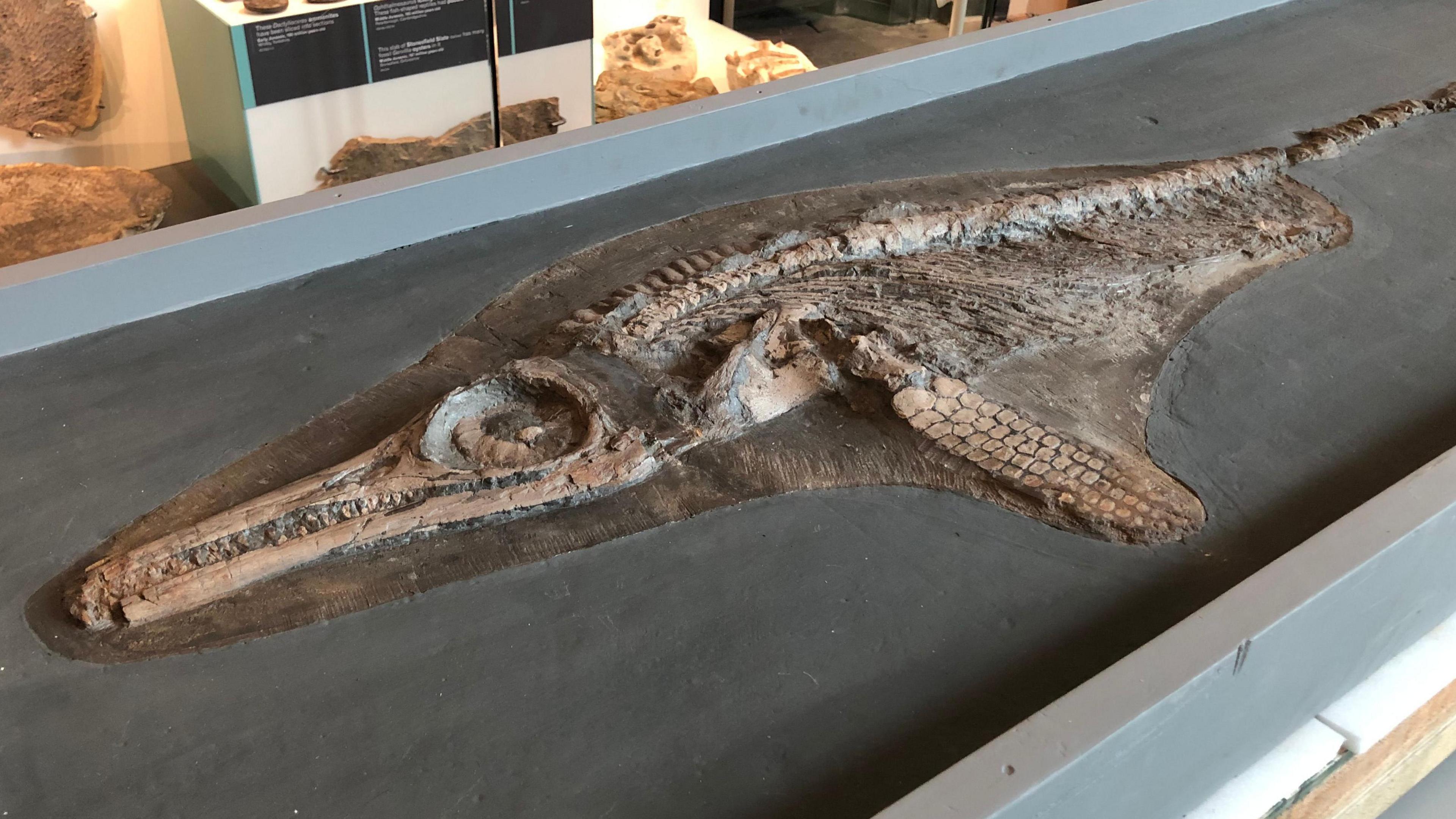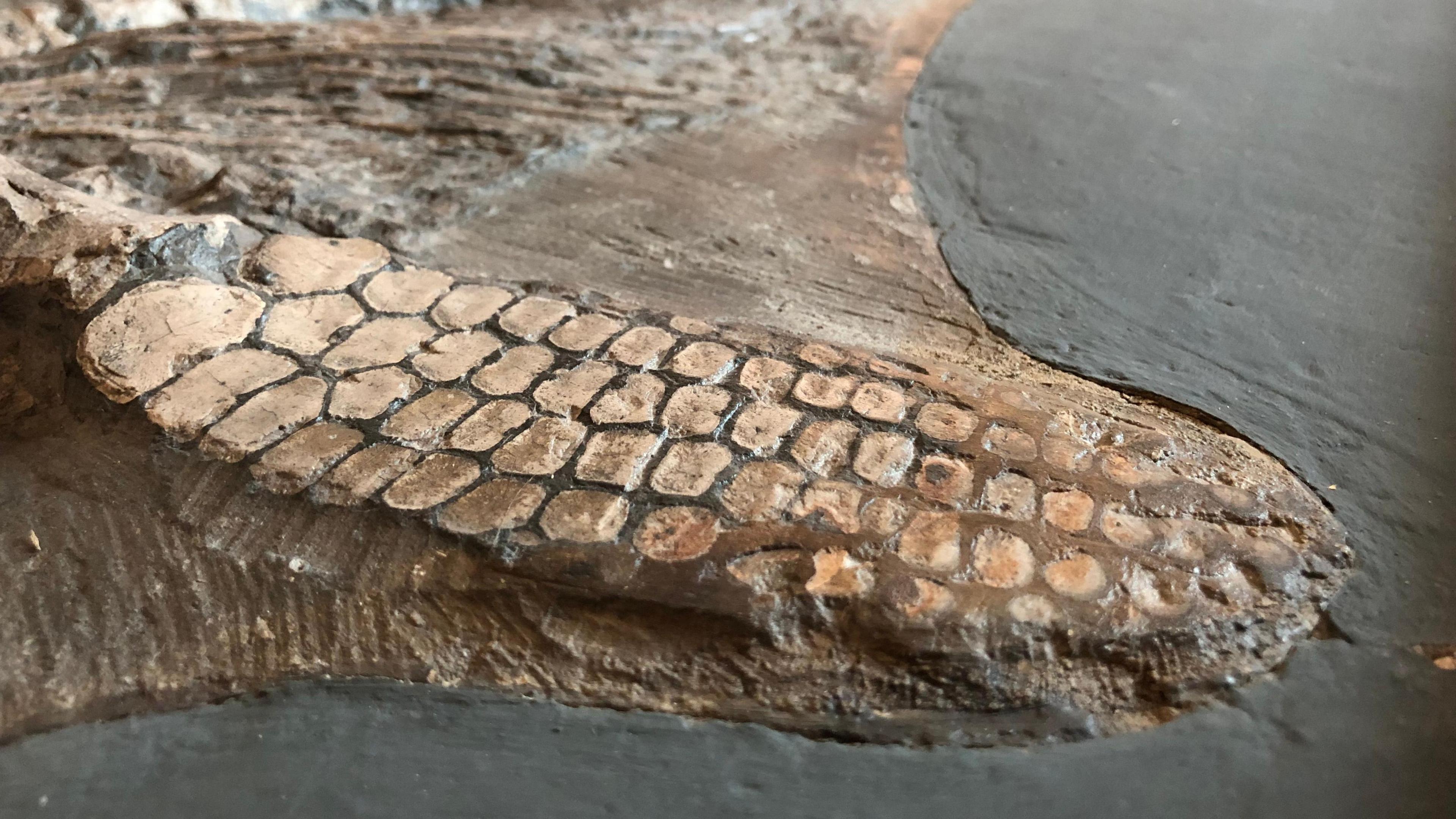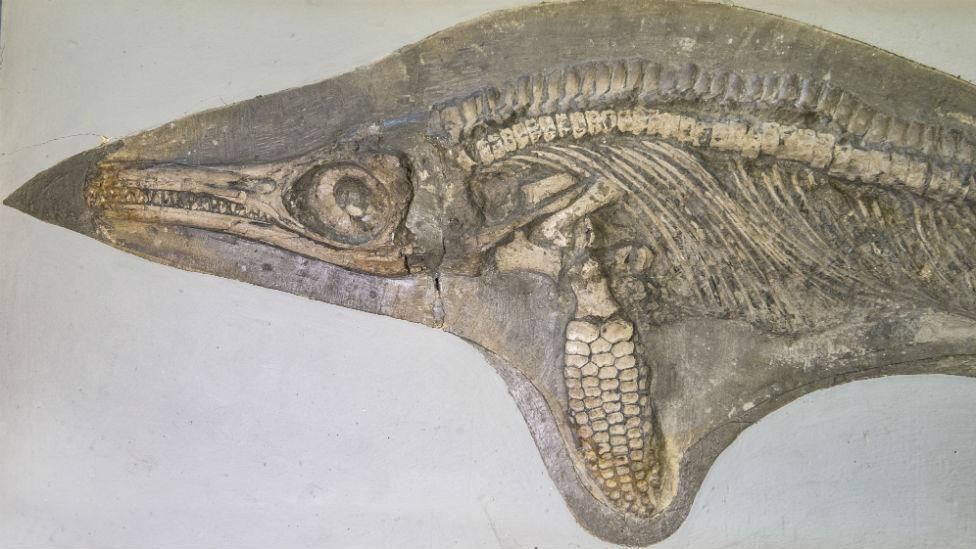Jurassic fossil found in storeroom to go on display

The specimen had been kept in storage for about 30 years before its scientific significance to science was established
- Published
A reptile fossil dating back to the Jurassic era is to go on display after being kept in storage for almost 30 years.
The protoichthyosaurus, a dolphin-like swimming reptile, had been in storage at the University of Nottingham until it was identified as a new species in 2017.
It is not actually known when the specimen was first discovered, according to experts.
On Friday, the university donated the fossil to Nottingham's Natural History Museum at Wollaton Hall as part of an upcoming exhibition.
The fossil was used for teaching before it was forgotten about and kept in a storeroom as it faded into obscurity.
But in 2017, Dean Lomax, a visiting palaeontologist, realised it was unlike others of its species, and following further studies, it was established the fossil was the first known of its kind anywhere in the world.

Dr Thomas Hartman has been the caretaker of the fossil over the past few years
The discovery of the protoicthyosaurus, a type of ichthyosaur, was hailed a "major step" in understanding the species's evolution.
Some 200 million years ago, the reptile would have lived in the ocean while dinosaurs lived on land.
Dr Thomas Hartman, keeper of the university's zoology collection, said the protoichthyosaurus had a long "fish-like tail" and a dorsal fin "just like a shark or a dolphin".
He said the gallery at Wollaton Hall would allow the specimen to be on public display "in a way that is impossible at the university".
"It's far better that this unique fossil is placed in a museum where it is safe in perpetuity, valued and accessible to both the public and scientific community," he said.

Palaeontologists said the paddle of the fossil was an indication of its "uniqueness"
A number of experts were involved in moving the specimen into its historic new home on Friday - and it was not an easy task.
The fossil, embedded into a heavy slab of Victorian plaster, had to be carefully handled while being lifted by several people into a safe place in the museum.
It is due to be on display at the Discovering Dinosaurs gallery at the Natural History Museum from late summer or early autumn.
Follow BBC Nottingham on Facebook, external, on X, external, or on Instagram, external. Send your story ideas to eastmidsnews@bbc.co.uk, external or via WhatsApp, external on 0808 100 2210.
Related topics
- Published10 October 2017
